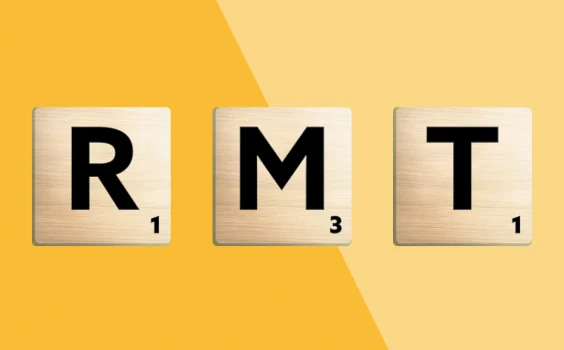Massage Therapy Industry Abbreviations
Tuesday, March 25, 2025, 03:24 PM
Your Guide to Commonly Used Terms
The massage and holistic health industry uses many abbreviations to simplify commonly used terms related to the human body and anatomy.
Abbreviations are shortened forms of words or phrases, making communication quicker and more efficient. There are two main types of abbreviations: acronyms and initialisms.
While abbreviations are common across industries, they can be intimidating for newcomers who are still learning the terminology. Massage therapists often use acronyms and initialisms in treatment notes to document information efficiently.
In this article, we'll introduce some of the most common terms you may encounter.
Share this article with your professional network on social media and let us know your most used abbreviations by tagging us @nhpcanada!

Technique and Anatomy
Throughout their education in a recognized program, massage therapists are introduced to a variety of terms, which their program likely covers in depth.
AK: Applied Kinesiology
This practice uses a variety of assessment and treatment techniques to address weakened and strained muscles. This can include muscle testing, meridian therapy, joint mobilization, myofascial techniques, and more.
ART: Active Release Technique
This practice is a soft tissue technique that treats problems with muscles, tendons, ligaments, fascia (connective tissue), and nerves by manipulating and restoring movement to the tissues that surround muscles.
B (often circled): Bilateral
Refers to working or affecting both sides of the body.
CFF or XFF: Cross Fiber Friction
A massage technique performed on the tendons to help break up adhesions and scar tissue, which can reduce fibrosis. “CF” on its own is simply short for cross fiber.
CST: Craniosacral Therapy
In this practice, practitioners use their hands to release built-up tensions within the body associated with the craniosacral system (the liquids and membranes that support the functionality of the brain and spinal cord).
DT: Deep Tissue
A type of massage that targets deeper tissues with greater pressure.
EW: Energy Work
A practice that focuses on clearing blockages, disturbances, or imbalances in the human energy field. The practitioner supplies the energy or acts as a channel or focus for a greater energy field. There are many different types of energy work.
FBM/FB: Full Body Massage
Involves applying massage technique to the entire body, from head to toe.
HEP: Home Exercise Program
Practitioners may recommend a customized program for their client to do at home, including stretching, strengthening exercises, relaxation activities, ice/heat instructions, etc.
IASTM: Instrument Assisted Soft Tissue Mobilization
This technique uses special instruments or tools, often made of stainless steel, to help manipulate soft tissues.

MFR: Myofascial Release
A hands-on therapy based on releasing built-up tension within the myofascial tissues to help relieve muscle pain stemming from trigger points.
MLD: Manual Lymphatic Drainage
A gentle massage technique that improves the flow of the lymphatic system, an important part of the immune system, by helping to reduce swelling and ensure optimal functioning.
MMT: Manual Muscle Test
A test of muscle strength and function to evaluate weaknesses or imbalances in the body.
NMT: Neuromuscular Therapy
A highly specialized method of treating orthopedic conditions, learned and practiced as "protocols" or routines. Protocols are standardized procedures dedicated to a specific body region.
O+I: Origins and Insertions
Origins and insertions refer to the type of muscle attachment. Knowing these points helps the practitioner target specific areas for treatment. Origin is a fixed point, whereas an insertion is mobile.
PNF: Proprioceptive Neuromuscular Facilitation
A stretching technique used to improve flexibility and range of motion in muscles.
RYT: Registered Yoga Training
Yoga instruction involves 200 hours of training in core sciences, theory and application, methodology, and practicum.
TPT: Trigger Point Therapy
This practice uses compression, stretching, and hydrotherapy to release active, tightened, or referred trigger points that create pain in muscle tissue.
TTM: Traditional Thai Massage
This type of massage involves stretches and strokes performed on floor mats or low tables. Thai massage was developed over 2,500 years ago from the Chinese Meridian Theory and Ayurvedic medicine in Thailand.
Ailment and Medical
Massage therapists may use abbreviations for the most common conditions they work with.
BP: Blood Pressure
CNS: Central Nervous System
CR: Contract-Relax
CTS: Carpal Tunnel Syndrome
DVT: Deep Vein Thrombosis
HT: Hypertension
Hx: History
LBP: Low Back Pain
MVA: Motor Vehicle Accident
NWB: Non-Weight Bearing
OA: Osteoarthritis
Pt: Patient
RA: Rheumatoid Arthritis
RICE: Rest, Ice, Compression, Elevation
ROM: Range of Motion
SCI: Spinal Cord Injury
Tx: Treatment
WFL: Within Functional Limits
WNL: Within Normal Limits
Professional Titles
Many massage therapists work in multi-disciplinary clinics with other professionals in the health care field, whose titles may be abbreviated.
AT: Athletic Trainer
DO: Doctor of Osteopathy
DC: Doctor of Chiropractic
MD: Medical Doctor (also referred to as GP: General Practitioner)
MO: Manual Osteopath
NHP: Natural Health Practitioner. This is also referred to as a Natural Health Product, but for our use, Practitioner is within the scope of our organization.
NP: Nurse Practitioner or Naturopathic Doctor (often context-dependent)
OT: Occupational Therapist
PT: Physiotherapist
RMT/MT: A Registered Massage Therapist (a protected title in regulated provinces), or Massage Therapist, is a professional bodyworker who went to school for massage therapy. The education involves an extensive 2,200-hour or two-year program, where they learn about anatomy and technique to become certified in the industry.
TCM: Traditional Chinese Medicine. TCM practitioners use several approaches like acupuncture, tai chi, and herbal products to address health problems.

Additional Terms
Finally, there are other terms that you may come across in the industry or as part of a professional association:
CCP or CEC or CPD: Continued Competency Program, Continued Education Credits, or Continued Professional Development
Did you know that massage therapists and other holistic health practitioners are required to continue their education throughout their careers? Practitioners learn new skills and refine their techniques by attending workshops or webinars, conducting research, volunteering, and more.
CGL: Commercial General Liability
Many practitioners hold this type of insurance in addition to their medical malpractice insurance. CGL insurance covers you if a client hurts themselves or damages their property while at your business. It’s often referred to as “slip-and-fall insurance.”
RCT: Randomized Controlled Trial
A scientific experiment that compares the effectiveness of a treatment or intervention to a control group. Many research studies in the health field use this approach.
SOAP Note: Subjective, Objective, Assessment, Plan
SOAP notes are used by practitioners to document treatment and include the four requirements in the name.
We hope this helped familiarize you with some common industry terms. Download a PDF copy of this list to save in your files or pin up in your office. Let us know if there’s anything you’d add to the list at communications@nhpcanada.org.

